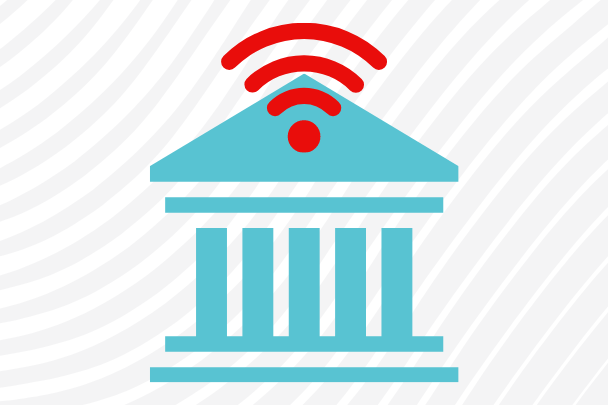
eduroam V
eduroam Visitor Access (eVA) enables research and higher-ed institutions to easily provide secure, temporary Wi-Fi access to visitors that are not from an institution that participates in eduroam. As an eVA host, you have full control over the length of time visitors can access your eduroam network. You can also delegate the ability to create visitor accounts to others within your organization, taking the admin load off your IT team and making it easier for office managers, event hosts, and other trusted staff to manage access for their visitors.
eVA simplifies visitors’ user experience.
If you’re a staff or faculty member at a research or higher education institution, you can:
- Use the eVA management portal to easily grant Wi-Fi access to your visitors, using the globally recognized eduroam service.
- View statistics and detailed account information for the eVA visitor accounts you’ve created.
- Rest easy, knowing that the accounts you’ve created will expire automatically – but you can also cancel them at any time.
eVA securely connects visitors to the globally recognized eduroam network.
If you’re visiting an eVA site, you can:
- Simply send a self-service SMS code to request eduroam access through your mobile phone, without having to ask for support from your campus host or the IT department.
- Rest easy, knowing that unlike public or open Wi-Fi networks, you’ll be connected via the secure, globally recognized eduroam network, developed with industry standards and security best practices. To maximize the security of your connection, install the eduroam Configuration Assistant Tool (CAT) on your device.
For IT teams at higher ed and research institutions:
eVA simplifies campus IT operations.
eVA works with your existing eduroam infrastructure. Using an easy-to-use management portal, IT administrators and delegates can grant secure eduroam access to visitors in four different ways:
eVA lets IT administrators:
Using eVA
Deploying eVA at Your Organization
To deploy eVA, your organization needs to be a participant in the Canadian Access Federation (CAF) and have both Federated Identity Management (FIM) and eduroam implemented.
- If you are not currently participating in CAF, you can apply to join here: canarie.ca/identity/join
- If you participate in CAF but have not yet deployed FIM, please contact canops@canarie.ca for next steps.
- If you participate in CAF and need technical support with your implementation of FIM, eduroam, or eVA, please contact tickets@canarie.ca.
Granting Access to Visitors
Fees
The eVA service is included in your CAF bundle of services – there is no additional fee to implement it.
eVA Quick Links:
Program News
Never miss out. Subscribe to
the CANARIE Newsletter


